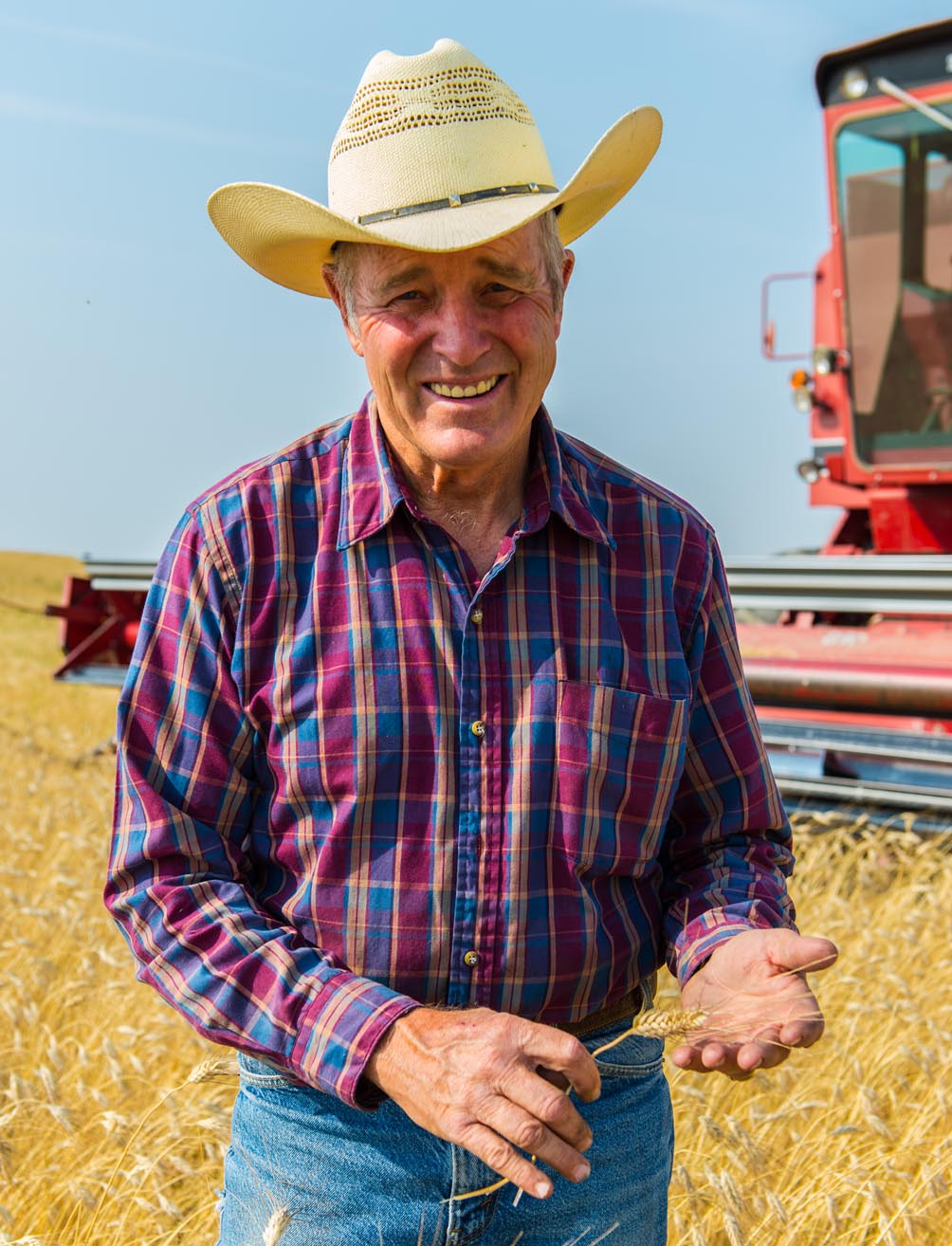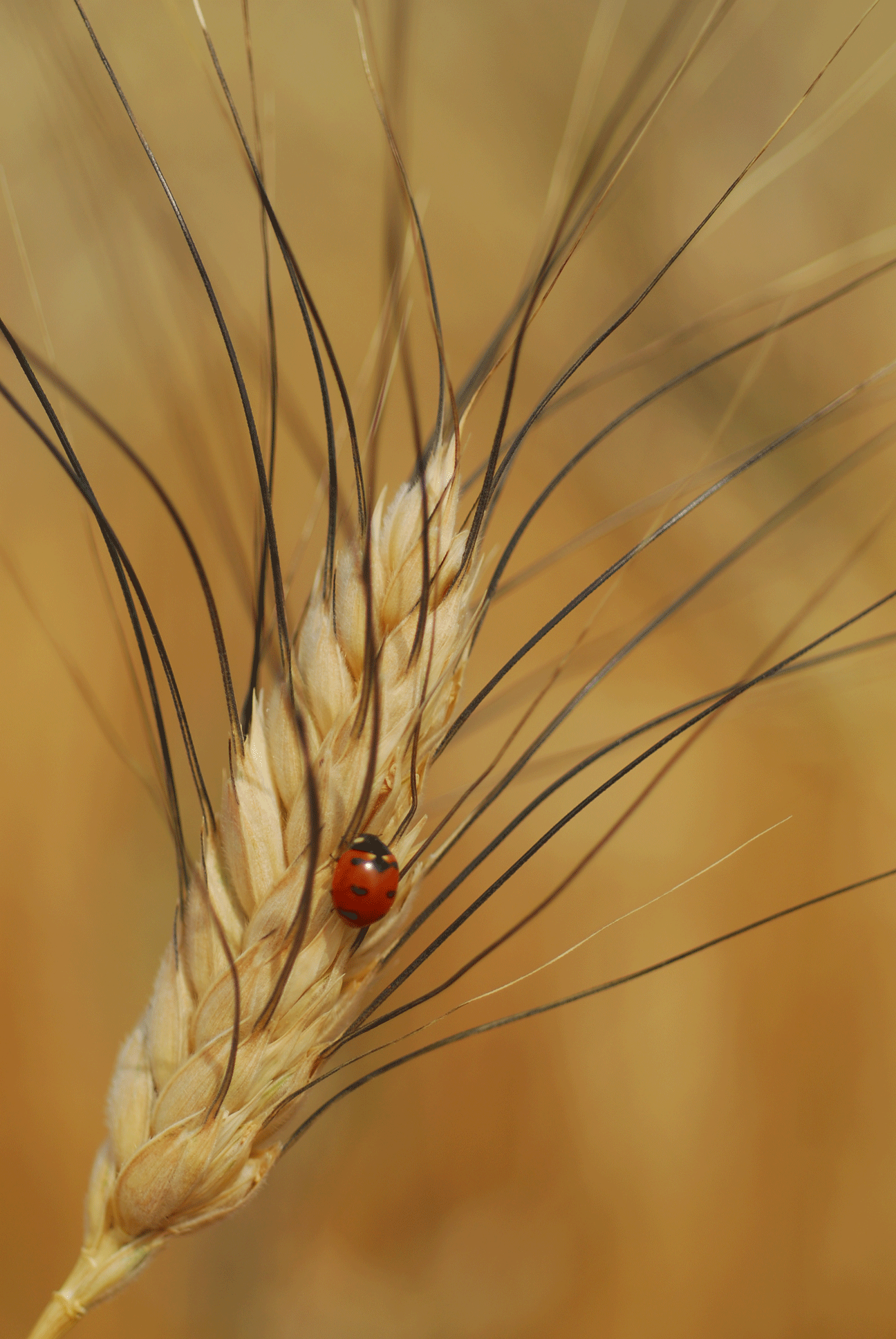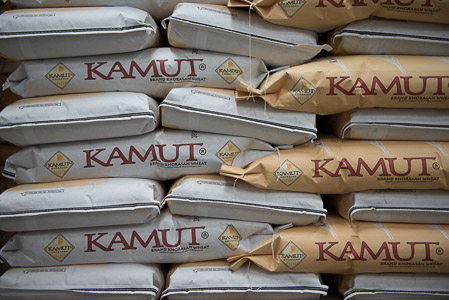Kamut International (KI) has been a sponsor of GMO Inside for the last three years. We chatted with Bob Quinn, KI founder and organic farmer from Montana, to discuss the history of the company and what differentiates KAMUT khorasan wheat from other grains.

What is an ancient grain?
Ancient grains are those that are derived from ancient society and have been left practically unaltered by human interference since that time. Ancient grains are gaining in popularity, with grains such as spelt, khorasan, emmer, and einkorn becoming more common to consumers. These grains are vastly different from the modern wheat that most people consume on a daily basis.
KAMUT® is a brand name for an ancient grain (khorasan) and its history has a bit of folklore behind it. When Bob’s father originally received a few grains they came with a story that they were found in King Tut’s tomb. Eventually Bob traveled to Egypt to track the history of these seeds in an attempt to find their true origin. He was disappointed to find among the wheat recovered from ancient tombs and on display in the Cairo museum, nothing looking like giant seeds of khorasan. A few years later he traveled to Turkey where local farmers called the grain the prophet’s wheat. The local legend was that the wheat traveled in the Arc with Noah. While the exact history of KAMUT® khorasan is still unknown, scientists believe it originated from Mesopotamia.
Not all wheat is created equal.
It is important to remember that not all wheat is created equal. The most common forms of wheat today, the white flour that is used in so many processed goods and baked goods is vastly different than the stone ground whole grain wheat flour from 150 years ago and even further removed from ancient grains. These differentiations matter not only in how the grains can be used but also in how our bodies react to the grain. While only a small percentage of the population has celiac disease or a wheat allergy more and more people are noticing sensitivities to modern wheat.

What makes modern wheat so different? The vast majority of the wheat we consume today has been drastically altered from its original form. While wheat has yet to be commercially produced and sold as a genetically engineered crop it has still been altered through intensive conventional breeding. According to Bob “what is inherent and drives modern wheat breeding programs are higher yields and being able to produce more loaves of bread from the same amount of wheat, which is linked with the national drive to sell cheap food in this country. Cheap food is the main food policy these days. With that being the main goal many things have been changed. To make higher yields, plants were made shorter and more uniform, they were made more disease resistant, and more resistant to insects.” But all of these changes plus others have had many unintended consequences. “What is probably even more significant is the change in the proteins and starches in the kernel to make more loaves of bread with less wheat. This is significant because this is the part we actually eat,” says Bob.
The cheap wheat most often consumed today is stripped of many of its nutrients and removes the health benefits that can be found in ancient grains. All of this is done to lower costs. Research shows that it is how we have altered modern wheat that is resulting in so many health complications linked to wheat. The health implications of modern compared to ancient grains are a major focus area for KI. Bob thinks, “recent changes made to modern wheat is probably at the heart of the troubles that people are having eating wheat, these are unintended consequences that people are struggling with.”
Beyond the drastic changes caused by breeding, the ways our bodies react to modern wheat is a result of the conventional growing methods which use high levels of pesticides and synthetic fertilizers. Research in Canada has shown that our bodies’ response to glyphosate can be very similar to the response of wheat sensitivity. Oftentimes glyphosate is used as a desiccant to dry out the wheat in preparation for harvest, meaning that there is frequently glyphosate residue on the wheat kernels that are processed into food for human consumption.
This is why KI’s trademark and requirement of organic growing methods is so important. It ensures the integrity of the grain and limits the chemicals that the wheat crop is exposed to and in turn what consumers are exposed to.

Why a trademark?
One very unique thing you might notice about KAMUT® is that it is a registered trademark and carries the ® afterwards. Here is Quinn’s explanation of the reasoning behind this and why the trademark matters:
“Because I own the trademark I get to make the rules, the rules are that it always has to be organic and you have to tell truth about it. In our trademark rules, the wheat can never be changed from what we started with, so it can never be crossed with modern wheat. For example, they have cross bred spelt with modern wheat in order to get higher yields and they can still call it spelt. The common name for the variety sold under the KAMUT® trademark is khorasan and the same thing could technically be done with khorasan wheat and you could still call it khorasan. But with the trademark it guarantees that it is an ancient grain that has never been mixed with modern wheat or hybridized in any way. This is important because with modern wheat they have changed so much in the last 100 years.”
Are other farmers catching on to ancient grains?
As consumer demand continues to grow and conventional growing methods prove to be unsustainable for the land and famer income, more and more farmers are shifting to using organic methods and growing ancient grains. According to Bob, economics alone is enough of a reason for farmers to transition to organic. KI and their partners work with 200 organic farms in Montana, Alberta, and Saskatchewan totaling over 80,000 acres of organic agriculture this year alone.
Where can you find KAMUT?
KAMUT® Brand grain is used in a number of product’s that can be purchased at your local grocery store. While specialty natural food stores, like Whole Foods or your local food co-op, are going to have more of a variety, your local mainstream grocery store likely carries products such as baking mixes and flour that contain KAMUT® wheat. You can find a full listing of products at http://www.kamut.com/en/product.
This interview has been edited for length. All photos are courtesy of Kamut International.
This post is sponsored by Kamut International. Thank you for supporting the brands that support us. GMO Inside is a non-profit campaign and we are thankful for the brands that support our work to change the food system.


